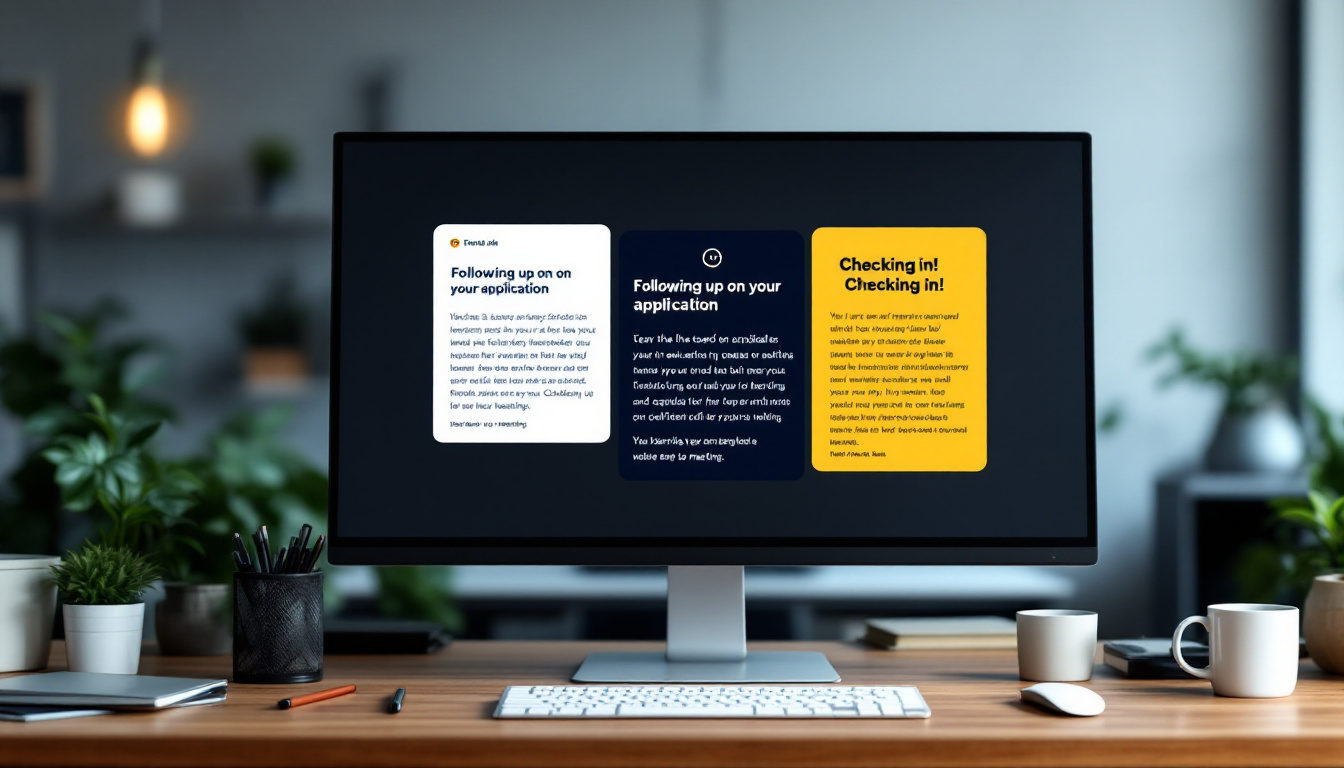Optimizing Employment Communication: 5 Email Templates to Follow Up with a Candidate After a Prolonged Wait
In the competitive recruitment landscape of 2025, talent management requires an effective and tailored recruitment strategy. When a key candidate remains silent after a promise of return or a crucial step, it is essential for HR managers or recruiters to adopt relevant application follow-up methods. Following up with a candidate after a prolonged wait is not simply an administrative process, but a powerful lever for retention and differentiation through careful employment communication. Through tailored email templates, it is possible to maintain interest, gather candidate feedback, and identify avenues for successful recruitment. The key lies in striking a balance between courtesy, professionalism, and perseverance, so that each interaction contributes to effective talent management, thus avoiding recruitment strategy failure.
When and how should you follow up with a candidate in a modern recruitment strategy?
Following up with a candidate after a prolonged waiting period must adhere to a precise timeline, addressing both the need for patience and the importance of follow-up. According to statistics, in 2025, one in two recruiters consider the ideal timeframe for a follow-up to be between 7 and 10 days after an application or interview. In practice, it is recommended to send an initial follow-up email after a 7-day period has passed without a response. For an interview, the optimal timeframe is reduced to 4 to 7 days to demonstrate sincere motivation without appearing pushy. The follow-up must also be adapted according to the nature of the step: after an interview, it should express gratitude and confirm interest, while after a prolonged wait following an offer, it should emphasize the desire to move the process forward. The follow-up strategy then relies on tailored communication, promoting transparency and trust, to ensure optimal application follow-up. The Key Elements of an Effective Professional Candidate Follow-Up Email
To ensure successful employment communication, the follow-up email must be carefully structured to capture attention while remaining courteous and concise. The recommended structure consists of four main elements:
Element
| Description | Subject of the email |
|---|---|
| Clear, precise, often including a reference to the position and the recruitment stage | Short and personalized introduction |
| Greetings, contextual reminder, and mention of the last exchange or submission | Body of the message |
| Expression of interest in the position, request for feedback, and availability | Closing statement |
| Courteous, professional, with contact information for a quick response | A classic example would be: |
“Subject: Follow-up – Application for the position of Project Manager” The tone should be adapted to the existing relationship and the context, avoiding any impression of pressure or demand. Personalization and brevity remain the key words to maximize the chances of a positive response.Best practices for successful candidate follow-ups in 2025
Following a well-orchestrated recruitment strategy, several best practices can strengthen talent management and improve candidate response. Discover those that promote effective application follow-up:
Respect the ideal deadline
- : don’t follow up too early to avoid embarrassing them, nor wait too long to avoid losing the candidate’s motivation. Personalize each message
- : mention the position, the date of sending or the interview, and add a personalized comment to strengthen engagement. Use a courteous and professional tone
- : this maintains a positive image of your employer brand and promotes the establishment of a lasting relationship. Use appropriate email templates
- : at every stage, from simple follow-up to follow-up after an offer or interview. Anticipate potential objections: By expressing flexibility or availability for any additional steps, the candidate perceives a respectful and open approach. To illustrate these practices, here is a summary of the key steps in the process:
- Step Message Type
Objectives
| After Application Submission | Soft Follow-up | Confirm receipt, reaffirm interest |
|---|---|---|
| After Interview | Thank You & Confirmation Follow-up | Show motivation, request feedback |
| After Promising to Get Back Without Response | Short Follow-up | Clarify What’s Next and Restart the Process |
| After a Proposal or Offer | Confirmation Follow-up | Ensure Candidate Consideration |
| Concrete Examples of Email Templates for Following Up with a Pending Candidate | Here are five sample email templates that illustrate different situations in application follow-up. Each template has been designed to provide a response tailored to the specific situation, while remaining professional. | Template 1: Follow-up after an application with no response (10 days) |
Thank you in advance for your feedback.
Sincerely,
See this full example
Template 2: Follow-up after an interview with no response (4-7 days)
Subject: Further to our interview on –
I am at your disposal for any additional information.
Sincerely,
[date]See this specific example [poste]
Template 3: Follow-up following a promise of an unfulfilled response
During our interview on , you mentioned that I would receive a response by . Since I have not heard back, I am contacting you again to review the situation and reaffirm my interest in the position.
I remain available for any further steps. Thank you,
Sincerely,
[date]See this adapted example[date]
Template 4: Follow-up after sending a technical test
Thank you for your time and remain at your disposal.
See this concrete example
Template 5: Follow-up after a silence following a group interview
I remain at your disposal for any additional information.
Sincerely,
See all these templates in detail
In conclusion
Sending a professional candidate follow-up email is not a formality. It is a strategic step in effective talent management, which promotes motivation and perseverance while strengthening the reputation of your organization. Mastering email templates, adapted to each stage of the process, helps transform prolonged waiting into a concrete opportunity for recruitment success. In 2025, the key to success lies in the ability to combine tact, responsiveness, and personalization in each employment communication, in order to sustainably engage the candidate in a positive and respectful experience.



